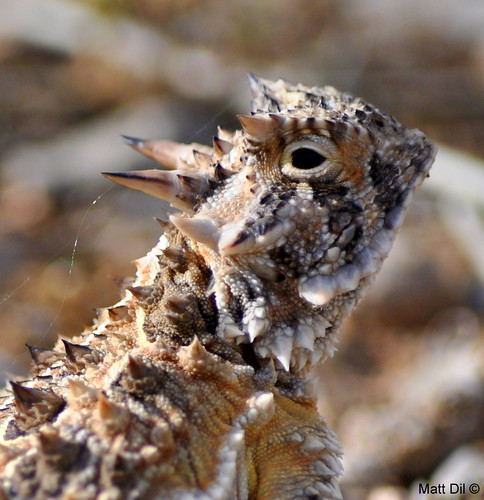Enter the Phrynosoma cornutum!
 |
| Texas Horned lizard (image credit) |
Initially in my previous Nanotechnology project, I had reviewed the strategy database on AskNature.org and came across the Thorny Devil. I found an interesting paper entitled 'Moisture harvesting and water transport through specialized micro-structures on the integument of lizards'. It has many interesting images and observations of different lizards including the 'Phrynosoma cornutum' which is also known as the Texas Horned lizard and is a member of the "horned frog" family. Supposedly they have a similar rounded body and blunt snout as some frogs. The research paper shows that this horned lizard shows further enhancement of the undercut micro structure and the image shown below (skin cross section) is actually more pronounced than that of the Thorny Devil. With that, it turns out that the Thorny Devil lizard is not in the same family as the Horned lizard and although they show similarities in their structure, they are supposedly an example of convergent evolution where two different species have evolved similar anatomies to achieve the same endpoint e.g. eating lots of ants. To protect themselves, these lizards will put their head between their front legs and a part of their neck will then resemble a false head with horns, scaring or poking predators if they come too close. It just shows again that there are many various strategies in nature, even within specie groups and families. Having a holistic overview is difficult to achieve.
 |
| Section of Texas Horned devil (image credit) |
Whether the Thorny Devil is in fact a lesser opponent for design inspiration will depend on whether semi circular channels inspired by the Texas Horned lizard will improve capillary action under the stringent conditions necessary in heat pipe containers. The addition of this design feature (the undercut channels) would seem like a logical iteration from the simplified hexagonal posts fabricated in previous concept work. The next post will hopefully show some quantitative estimations of the capillary action due to this geometry in a passive heat pipe setup.




